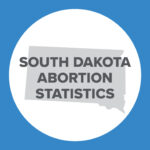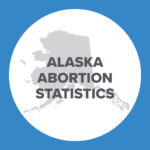CDC: Abortion Is Now at “Historic Lows”

In late November, the Centers for Disease Control and Prevention (CDC) reported that abortion in the United States has fallen to “historic lows” – with these most recent data revealing the lowest abortion rate since 1971, two years before the legalization of abortion nationwide via Roe v. Wade.
This latest CDC report, for year 2013 data, documents that since 2004 the total number of abortions (664,435) has fallen by 20 percent and the abortion rate (12.5 per 1,000 women) has fallen by 21 percent. Overall, the country’s abortion rate has decreased by five percent since last year’s report. Importantly, the data show not only a consistent downward trend, but also a pervasive one as most of the reporting states and localities experienced a decline in abortion rate from the year prior.
Below are some highlights from the report covering 2013 data. (Note: This CDC report does not include abortion data from California, Maryland, or New Hampshire, which have not reported abortion data to their health departments for years, as reporting is not mandatory.)
Area-Specific
- 40 of the 47 areas reporting to the CDC experienced a decrease in abortion rate from the year prior, including Washington, D.C., and New York City.
- 33 areas have an abortion rate below the national rate of 12.5 per 1,000 women.
- From 2012 to 2013, Hawaii experienced the greatest reported decrease (-31 percent); Delaware is next with a 21 percent decrease; and Nevada with a 16 percent decrease.
- New York City’s abortion rate (36.3) is almost three times greater than the national abortion rate (12.5 per 1,000 women). New York State’s cumulative abortion rate (24.3) is almost double the national rate.
- Mississippi’s (3.6) and South Dakota’s (3.8) abortion rates are more than two-thirds less than the national abortion rate (12.5).
- In comparison to 2003 data, Washington, D.C.’s abortion rate appears to have decreased the most — by 59 percent. However, the CDC notes that a complete number of abortions in D.C. could not be obtained since reporting is not mandatory.
- In comparison to 2003 data, Arizona’s abortion rate increased the most – by 16 percent.
Gestational Age
- Of all abortions, 7.1 percent were performed between 14 and 20 weeks’ gestation (measured by woman’s last menstrual period; or 18 weeks’ post-fertilization) – totaling more than 47,000 abortions.
- Of all abortions, 1.3 percent of abortions were performed at or after 20 weeks’ gestation (18 weeks’ post-fertilization) – totaling more than 8,600 abortions.
Early Chemical Abortion (defined by CDC as non-surgical abortions performed at or under 8 weeks’ gestation)
- Of all abortions among the 43 areas that reported chemical abortion as one of the methods, 22.2 percent were performed as early chemical abortions – an increase of five percent from the year prior.
- Of abortions performed at or before 8 weeks’ gestation, 32.8 percent were chemical abortions.
Adolescents (15-19 years old)
- Abortions for adolescents 15-19 years old accounted for 11.4 percent of all abortions. From 2004 to 2013, the percentage of abortions performed on adolescents aged 15-19 decreased 31 percent.
- The abortion rate for adolescents (8.2 per 1,000 females) decreased 46 percent from 2004. The CDC states, “These decreases were greater than the decreases for women in any older age group.”
- The abortion rate for adolescents under 15 years old has decreased 53.8 percent from 2004 to 2013.

In addition to these points, it is interesting that the CDC abortion report includes a “Public Health Action” (PHA) section in which it has generally stated that “increasing access to and use of contraception” can reduce abortion by way of reducing unintended pregnancy. (See here for more information debunking the effectiveness of state contraceptive mandates based on state health data from nearly all 50 states, by CLI associate scholar, Michael, J. New, Ph.D.) Regarding this section, one can note that the 2005 CDC report was the last year in which the PHA section included language on “improv[ing] the health and well-being of women,” which was originally included in reports from 2000 to 2005. Perhaps even more interesting is the fact that the PHA section of the abortion report included language on the well-being of women “and infants” from 2000 to 2004, and not thereafter.
Since the CDC’s abortion surveillance report has consistently been released over the past decade and a half on or around Thanksgiving, pro-lifers in particular would do well to continue sharing information about abortion’s decline in America, which otherwise may not receive much coverage in the media.
The documented consistent and pervasive decline of abortion in the United States is extraordinary news. Yet, much more can be done regarding the missing abortion data from many states (of which California, Maryland, and New Hampshire are estimated to represent 21 percent of all abortions[1]). Mandatory and timely abortion data reporting from the states is a reasonable and modest proposal that people from all sides of the abortion debate can agree is needed for a better understanding of abortion’s impact on women.
Genevieve Plaster, M.A., is Senior Policy Analyst at the Charlotte Lozier Institute.
[1] Jones RK, Jerman J. Abortion incidence and service availability in the United States, 2011. Perspect Sex Reprod Health 2014;46:3–14.


























